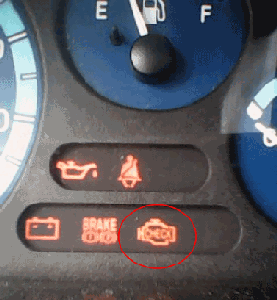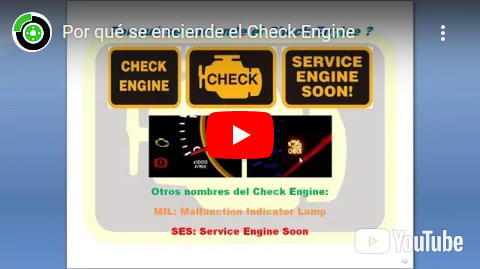Chevrolet Spark engine warning light
The Check Engine light is an alarm that goes on for several engine failure, and it is a wakeup call to do a review as soon as possible.
There are many car owners do not even know the name of this board warning light, much less what to do when it turned on.
The light of check engine lights for about 5 seconds each time we connect the power switch or turn on the engine of your car, then should go off if the test is successfully passed, otherwise stays on reminding us that something needs attention.
The check engine light comes on to indicate that something needs fixing, and that the Engine Control Module (ECM) operating in emerging mode, so that you can reach your destination and not stay in the way.
Many car owners drive their cars check engine light on all the time, making your car has a very low yield of gasoline, and that ultimately ends up being more expensive than repairing the damage. On the other hand, if the check engine light is lit many air pollutants are emitted gases.
That's why hardly notice that the check engine light comes on, look for the cause and do not let several flaws that ultimately will solve a headache accumulate.
 Why the Check Engine lights?
Why the Check Engine lights?
Then set a series of failures in the engine peripherals that make the alarm remains lit Check Engine, as well as fault codes show a scanner connected to the car:
MAP Sensor (Manifold Absolute Pressure Sensor): the check engine lights if the voltage sensor delivers very low-almost 0 volts, or "high voltage", close to the 12 volt battery / generator: Codes P0107 and P0108 respectively.
IAT Sensor (Intake Air Temperature Sensor): the check engine lights if the voltage sensor delivers very low-almost 0 volts, or "high voltage", close to the 12 volt battery / generator: Codes P0112 and P0113 respectively.
ECT Sensor (Engine Coolant Temperature Sensor): the check engine lights if the voltage sensor delivers very low-almost 0 volts, or "high voltage", close to the 12 volt battery / generator: Codes P0117 and P0118 respectively.
Sensor TPS (Throttle Position Sensor): the check engine lights if the voltage sensor delivers very low-almost 0 volts, or "high voltage", close to the 12 volt battery / generator: Codes P0122 and P0123 respectively.
Lambda Sensor or Oxygen Sensor (Oxygen Sensor): the check engine lights if the voltage sensor delivers very low-almost 0 volts, or "high voltage", close to the 12 volt battery / generator: Codes P0131 and P0132 respectively . This sensor can also generate the code No Activity P0133.
Sensor HO2S (Heated Oxygen Sensor): This type of sensor is an improvement Lambda Sensor or Oxygen Sensor, which has been added a heating resistor, allowing the sensor into activity faster when heated with electricity from the battery / generator. The check engine lights if the voltage sensor delivers very low-almost 0 volts, or "high voltage", close to the 12 volt battery / generator: Codes P0137 and P0138 respectively. It also presents the Fault Codes No Activity and Malfunction: P0140 and P0141.
Fuel Trim System: This failure occurs when the air / fuel mixture is depleted or enriched oxygen fuel compared: P0171 (impoverished), P0172 (enriched).
Fuel Pump Relay: fails with low voltage and high voltage failure: Codes P0131 and P0132.
Fault Injector No. 1: Low Voltage and High Voltage: Codes P0261 and P0262
Fault Injector No. 2: Low Voltage and High Voltage: Codes P0264 and P0265
Fault Injector No. 3: Low Voltage and High Voltage: Codes P0267 and P0268
Fault Injector No. x: Low Voltage and High Voltage: P0xxx Codes and P0zzz
Multiple Cylinder Misfire: P0300 Code. This occurs when there are problems of failure high voltage into the cylinders, spark plugs and / or damaged cables.
Video: Chevrolet Spark engine warning light
 Knock Sensor Circuit Fault: A sensor located in the exhaust manifold outlet and detects excessive vibration, automotive ECM adjusts the ignition timing when knock is the spark plug firing: Code P0327.
Knock Sensor Circuit Fault: A sensor located in the exhaust manifold outlet and detects excessive vibration, automotive ECM adjusts the ignition timing when knock is the spark plug firing: Code P0327.
There are other flaws also make light of check engine lights, so it is advisable to review and complete all engine fluids: engine oil, gearbox oil change, brake fluid, coolant, check that all connectors are in good condition and properly connected.
Fault codes above are typical of a Chevrolet Spark, and are different for each car as indicated by the manufacturer.
